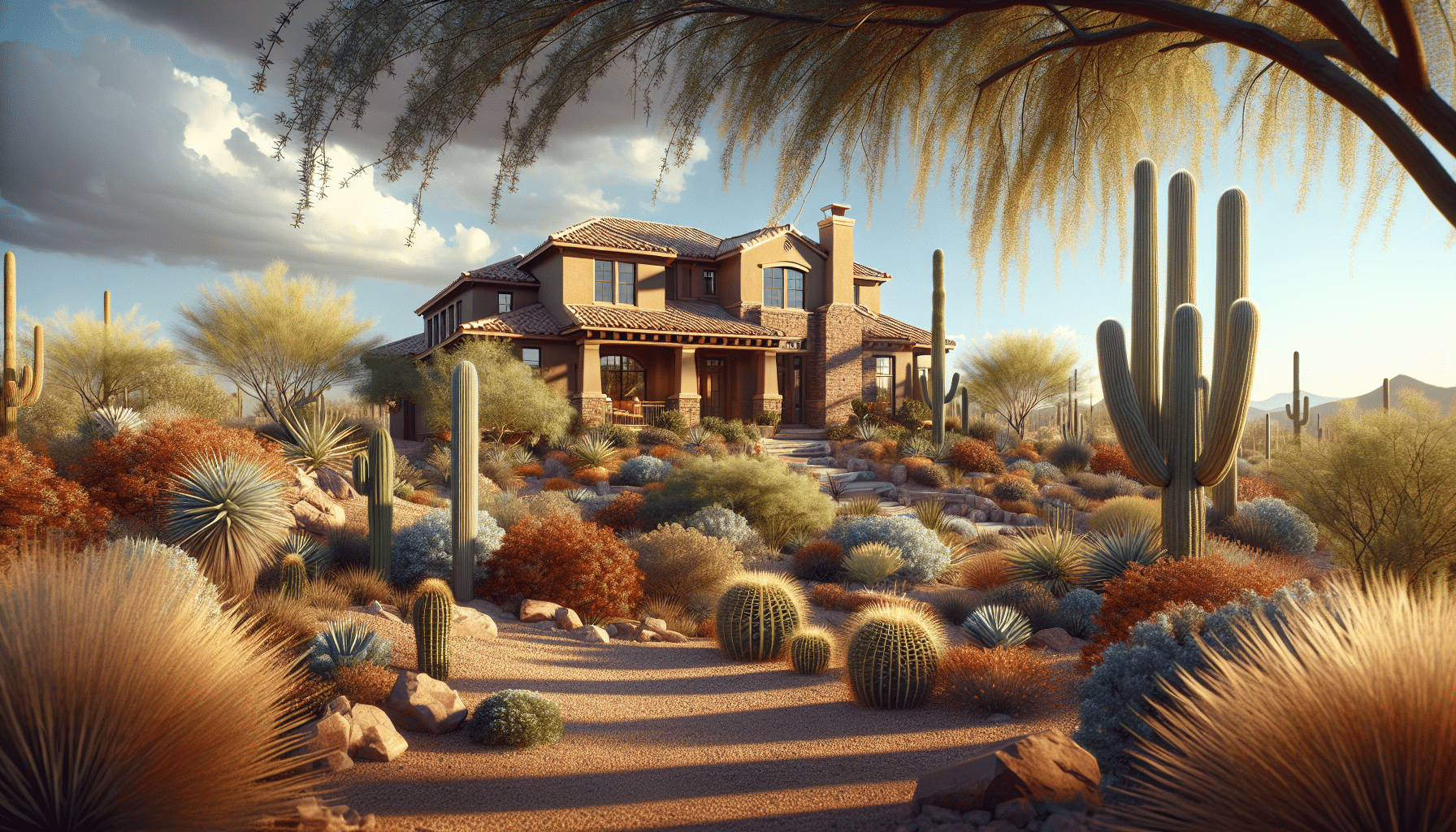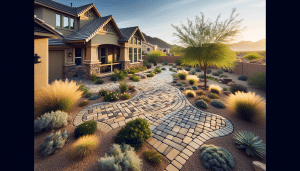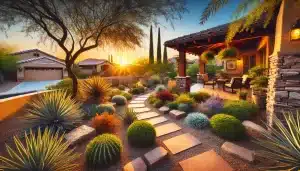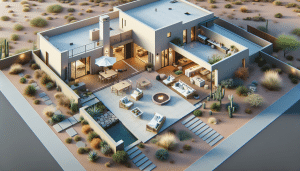Creating a beautiful desert landscape is both an art and a science, particularly in the sun-drenched east valley of Arizona. At Red Mountain Landscaping, we understand that homeowners are often puzzled by the unique challenges presented by desert terrains. But fear not! This blog post provides practical and fun solutions to help you design a breathtaking desert landscape that not only survives but thrives. Follow our expert tips, and you’ll be the proud owner of a yard that isn’t just beautiful but also sustainable and suited to the local climate.
Contents
Understanding Your Environment
The journey to creating a stunning desert landscape begins with understanding your environment. Knowing the specific conditions of a desert area is crucial for selecting the right plants and design elements.
The desert climate is characterized by extreme temperatures and low rainfall, making it essential to choose materials and plants that can withstand these conditions. While this might seem limiting, it’s actually an opportunity to embrace the unique beauty and resilience of desert-friendly options.
Learning about local soil types and water availability will assist you in designing a landscape that not only looks great but also integrates seamlessly into its environment. It’s about working with Mother Nature rather than against her.
Choosing the Right Plants
Select plants that will thrive under the sun’s relentless gaze! Here’s how to make the right choices for your desert landscape:
- Native Plants: Incorporating plants that are native to desert regions is a smart choice, as they have evolved to survive in the local climate. Look for species like cacti, succulents, and native shrubs that require minimal watering.
- Drought-Resistant Varieties: Opt for plants that are known for their drought resistance. Varieties such as agave, yucca, and desert marigold add both color and texture with little water.
- Pollinator-Friendly Options: Consider adding plants that attract pollinators, like bees and butterflies, which promote a healthy ecosystem. Desert milkweed and globe mallow can make your garden a haven for these friendly helpers.
Efficient Irrigation Systems
Keeping your plants hydrated in the desert doesn’t mean drowning them! Installing an efficient irrigation system is crucial.
Drip irrigation systems are incredibly effective in desert environments, as they deliver water directly to the roots, minimizing evaporation. This method helps conserve water while ensuring that your plants receive the moisture they need.
Consider pairing your irrigation setup with a smart controller that adjusts watering schedules based on weather conditions, making your landscape not just beautiful but smart, too!
Creative Use of Hardscaping
Hardscaping elements can transform your yard from mundane to magical!
- Pathways and Walkways: Build pathways using stone or decomposed granite to guide the eye and create functional walkways. These can add both aesthetic value and practicality to your yard.
- Decorative Boulders: Large rocks and boulders can serve as focal points and help break the monotony of a flat landscape. They’re a durable and natural addition that blends well with desert aesthetics.
- Comfortable Seating: Integrate seating areas with materials like natural stone benches or weather-resistant furniture, creating inviting spaces to relax and enjoy your desert paradise.
Incorporating Shade and Shelter
While sunshine is abundant, a little shade can go a long way in enhancing your comfort outdoors.
Trees and tall shrubs can provide natural shade, reducing the ambient temperature and making your outdoor spaces more livable. Palo Verde and Acacia trees are excellent choices, as they thrive in the desert environment.
Consider adding pergolas or shade sails to provide relief from the sun. These structures are not only practical but can also add an architectural element to your Landscape Design.
Sustainable Practices for Long-Term Beauty
Maintaining a sustainable landscape means thinking long-term while planning your design.
Start by incorporating mulch and ground covers to reduce soil erosion and help retain moisture in the ground. This will improve soil quality and reduce the amount of water your plants need.
Additionally, focus on reducing waste by composting yard debris and using organic fertilizers. This helps in creating a nutrient-rich environment for your plants and reduces the need for chemical interventions.
Conclusion
Creating a stunning desert landscape might seem daunting, but with the right guidance and a bit of creativity, you can craft a space that marries beauty with functionality. For personalized support and professional landscaping Services, contact Red Mountain Landscaping by phone at 480-373-9312 or Request a Free Quote.




